Episode 190: STS-97 - Ratcheting Up the Tension (ISS 4A: P6)
Table of Contents
On STS-97 the Space Shuttle is delivering its heaviest ISS payload yet: the P6 truss. We’ll climb high above the payload bay, consider some strange analogies, and both slack off and tense up. Most of that will make sense once you listen.
Also, please note that this episode has a couple of small audio clicks that I wasn’t able to remove. So it’s not your equipment, it’s my audio. Most of you won’t notice but I still wanted to mention something for those who do!
Episode Audio #
Photos #
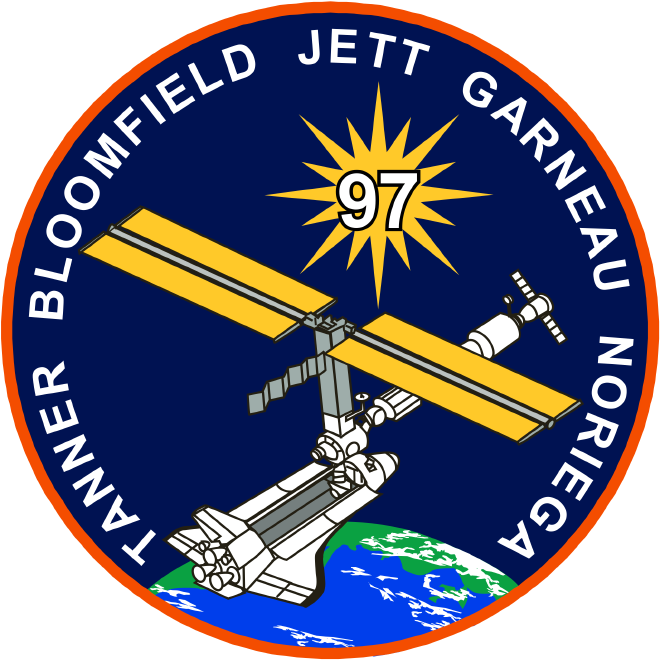
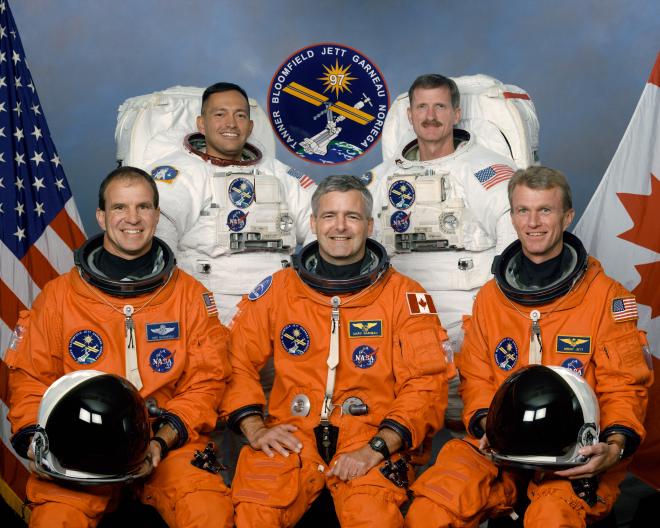
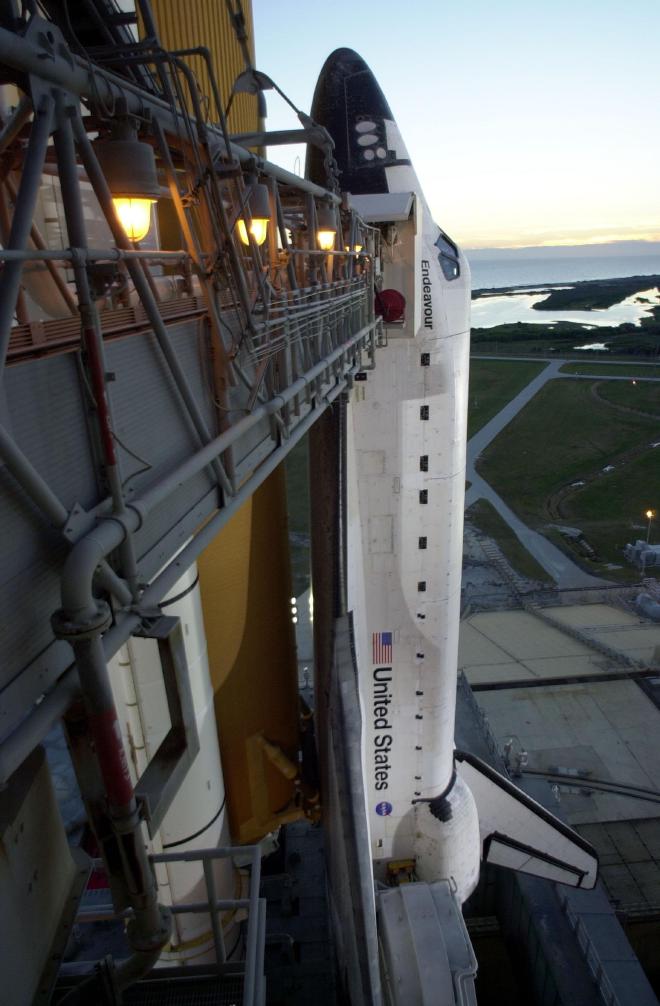
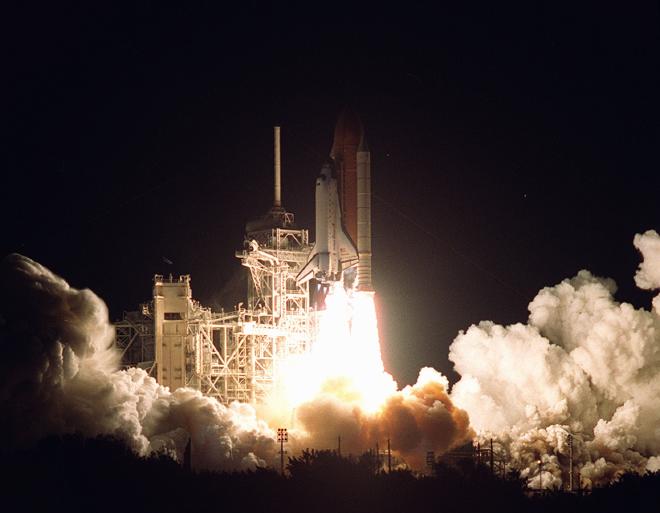
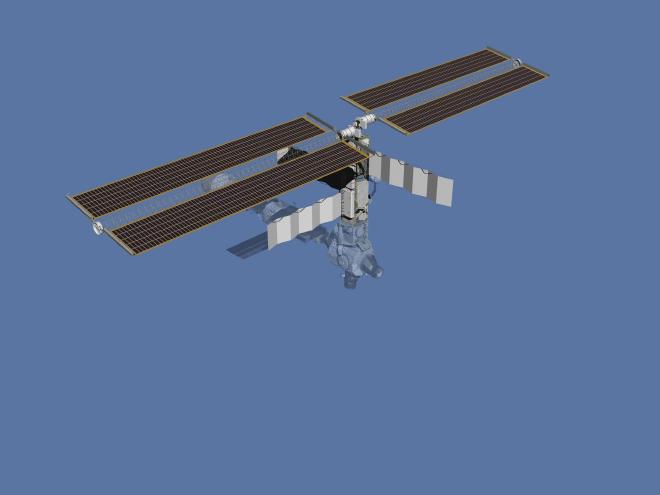
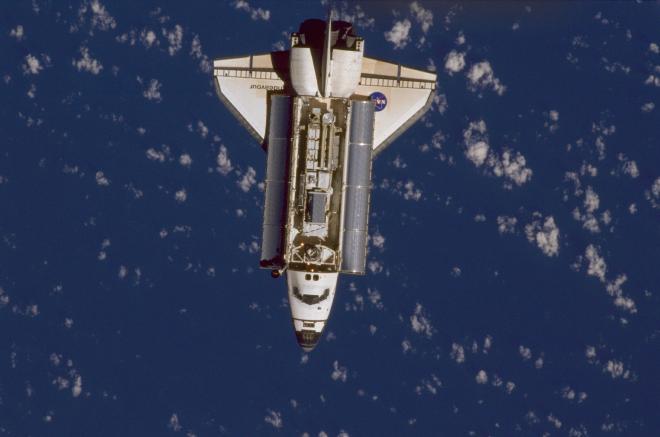
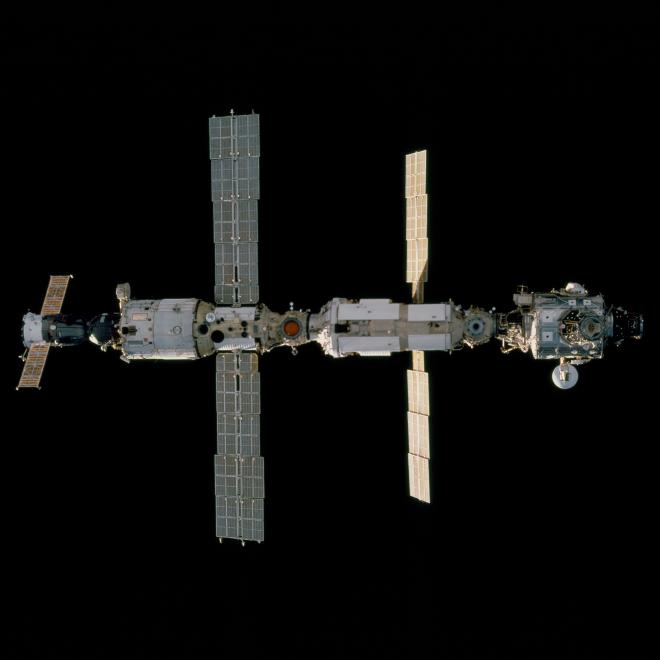
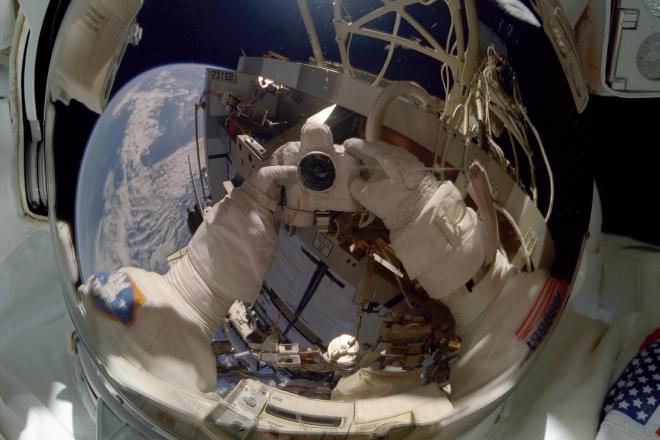
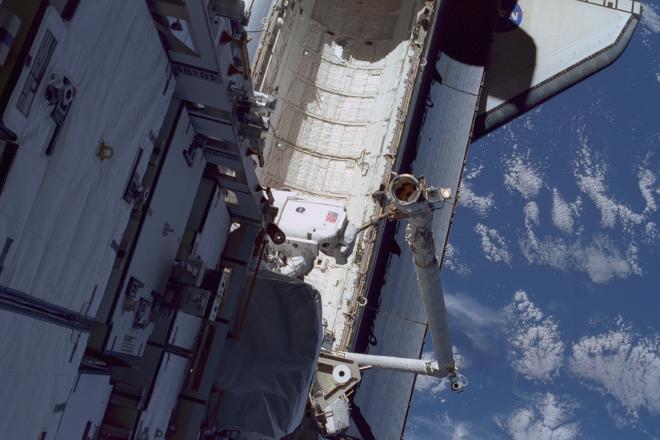
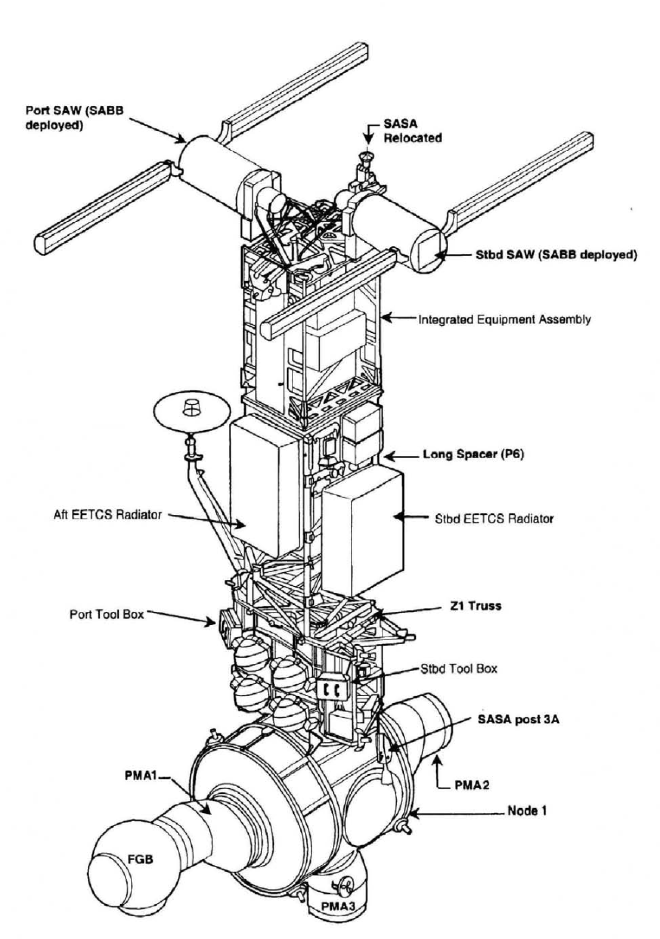
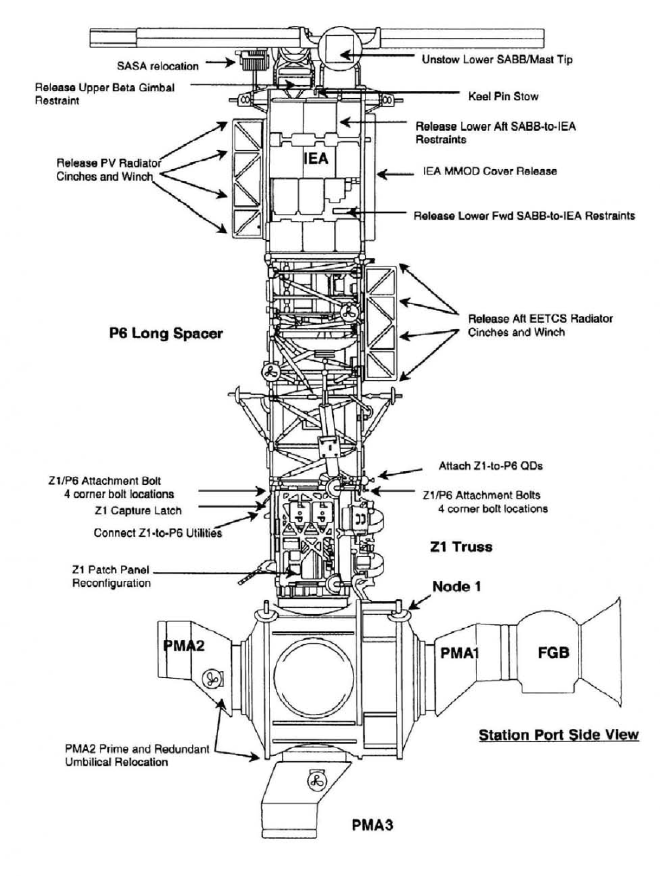
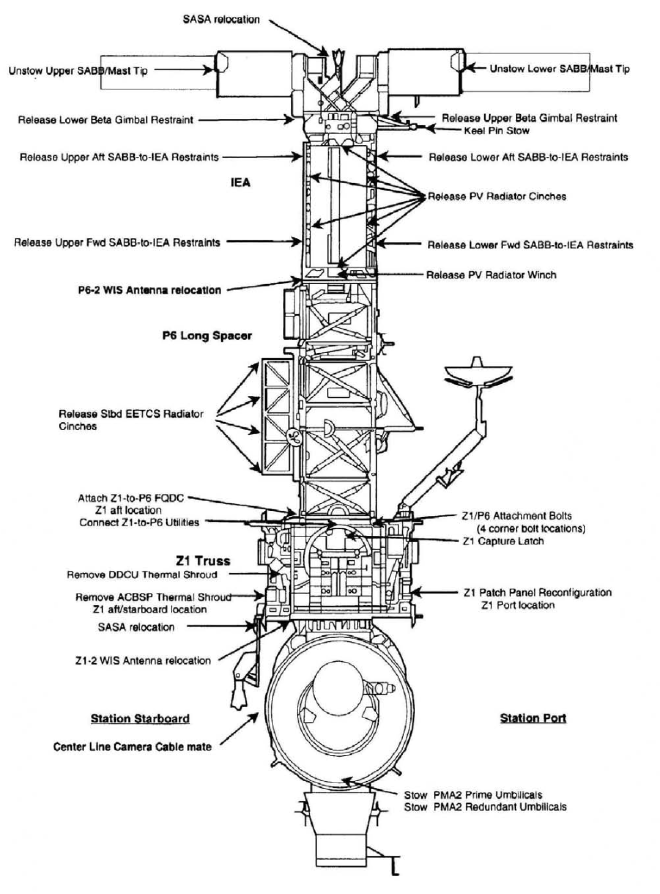
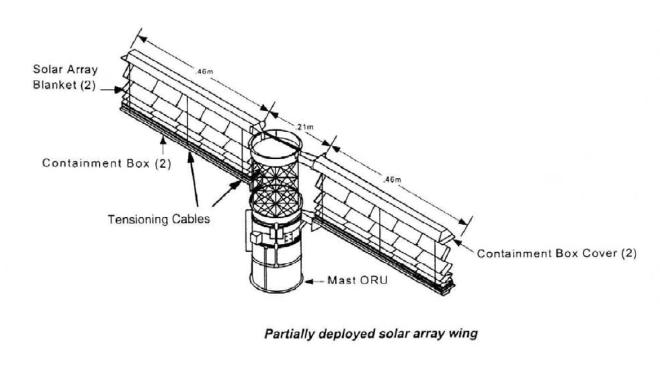
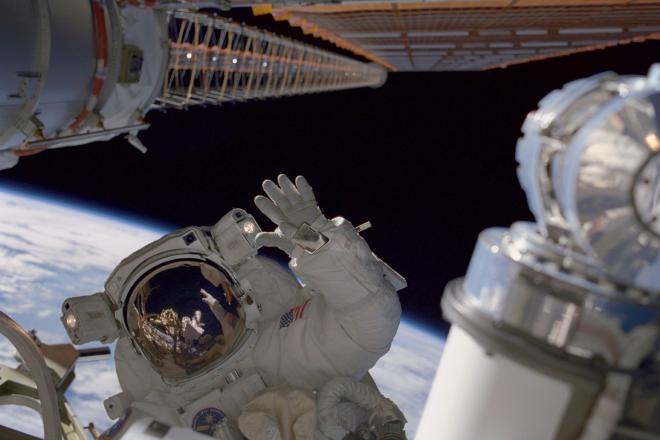
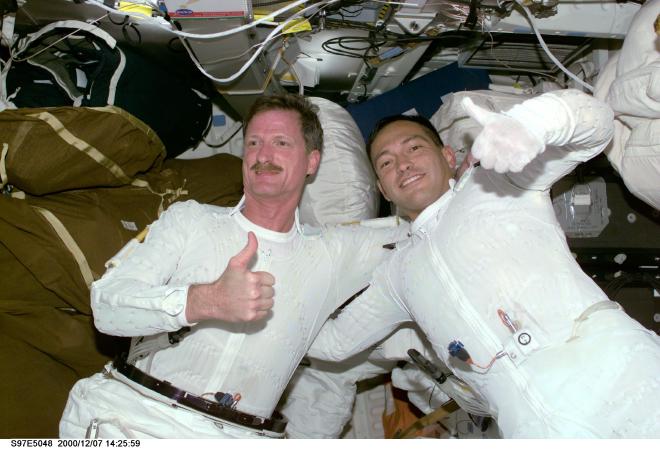
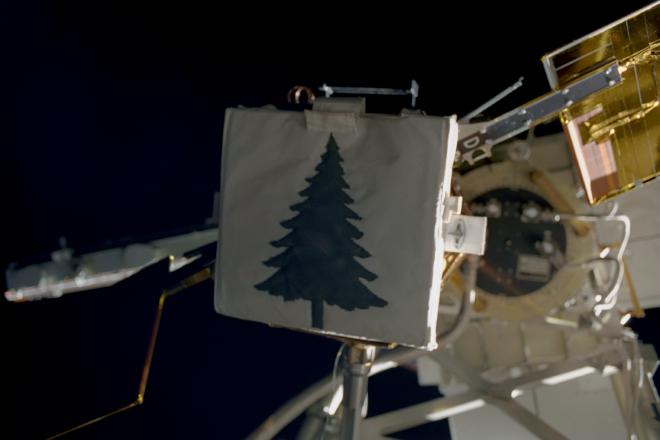
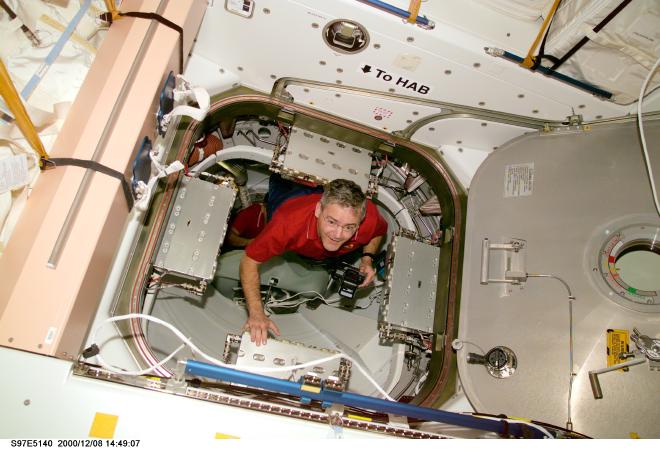
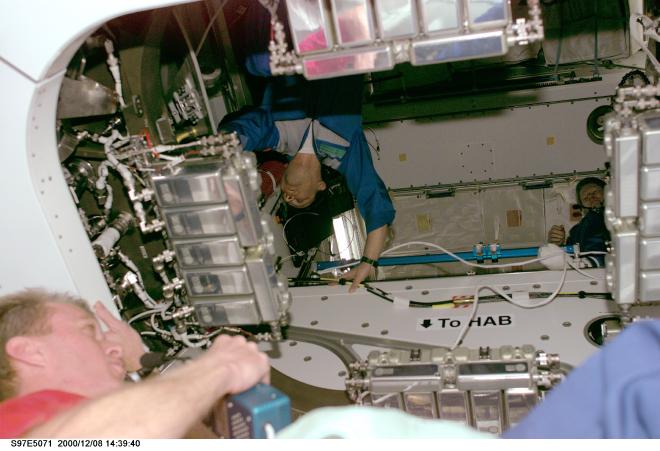
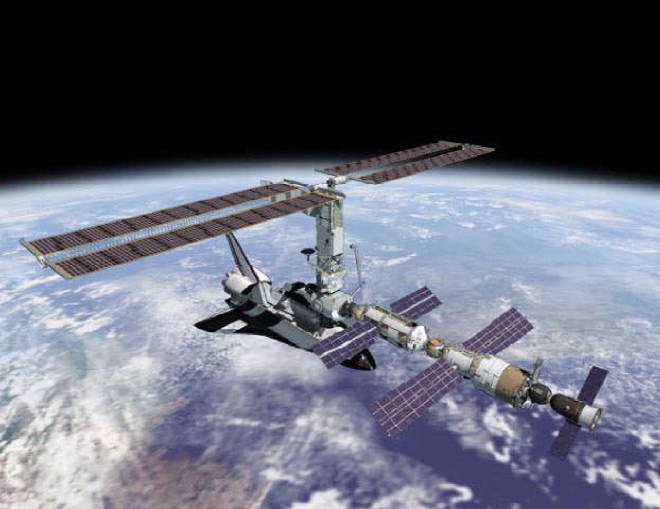
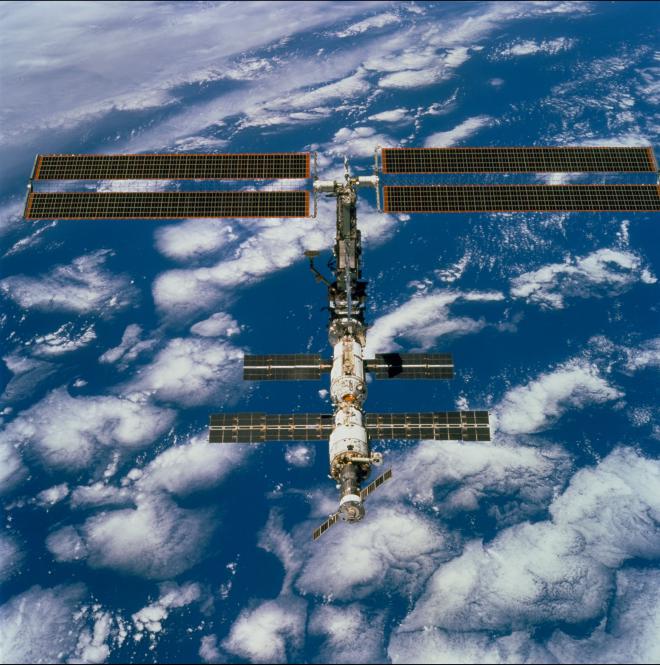
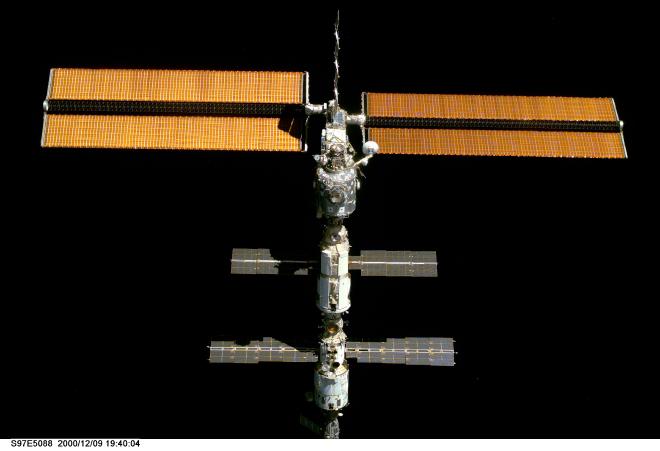
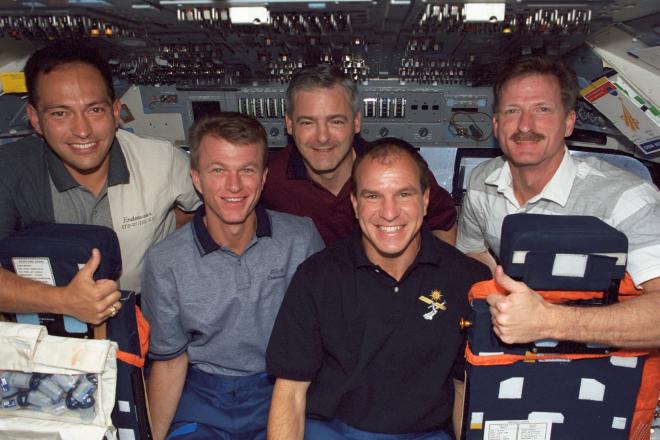
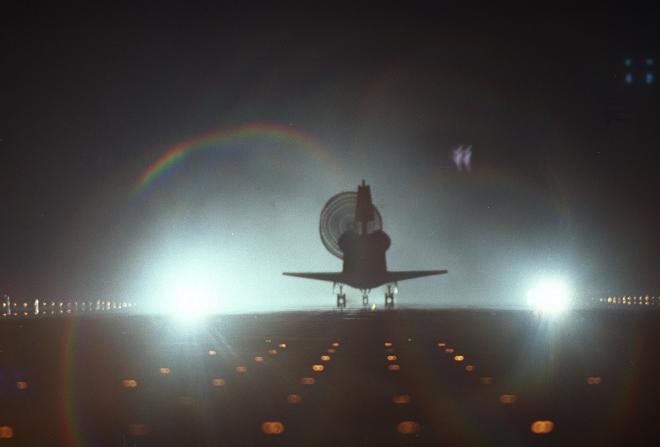
For more photos, head over to our friends at Wikiarchives.space: https://wikiarchives.space/index.php?/category/629
Post-Flight Presentation #
To see the mission in motion, check out the post-flight presentation!
Click here for full video details.
Transcript #
NOTE: This transcript was made by me just copying and pasting the script that I read to make the podcast. I often tweak the phrasing on the fly and then forget to update the script, so this is not guaranteed to align perfectly with the episode audio, but it should be pretty close. Also, since these are really only intended to be read by myself, I might use some funky punctuation to help remind myself how I want a sentence to flow, so don’t look to these as a grammar reference. If you notice any egregious transcription errors or notes to myself that I neglected to remove, feel free to let me know and I’ll fix it.
Hello, and welcome to The Space Above Us. Episode 190, Space Shuttle flight 101, ISS 4A, STS-97: Ratcheting up the Tension
Last time, we talked about the one hundredth flight of the Space Shuttle, STS-92. On that mission we visited our favorite home away from home, the International Space Station. While there, we attached a sort of outdoor utility closet in the form of the Z1 truss, secured a new docking port to the station, and learned just how funny weightless plumbing can be. Well I hope you enjoyed our trip to the ISS, because we’re heading back again today (and actually for the next six missions), but today has one key difference. This time, there will be people waiting for us.
Yeah, I know that when I signed off at the end of the STS-92 episode I implied that we would be following the Expedition 1 crew today, the first long duration crew of the International Space Station. But once I actually got started on this episode I realized that that wouldn’t really work. It basically boils down to this: it’s easier to discuss the Shuttle missions while sort of ignoring what the ISS crew is up to than it is to talk about the ISS missions while ignoring the Shuttle crews. And I can’t just do one monster episode that combines three Shuttle flights and an ISS flight because I’m pretty sure that would literally kill me.
So with that order of coverage set, please note that I will be doing my best to leave the ISS crew as unnamed mystery characters when talking about these upcoming Shuttle missions. It might be a little weird at times, but I want to give them their proper introductions in their own episode. So when the time comes, we’ll get to know all three of them in detail and will revisit these same Shuttle missions, along with all the weeks in between them, but from their point of view on the ISS.
OK, so with that out of the way, this is going to be one of those episodes where we just jump right in and learn about the flight as we go. So let’s meet the crew! We’ve got a group of five veterans and zero rookies, so we’ll get through them in no time.
Commanding the flight is someone we haven’t seen since the Shuttle-Mir days, Brent Jett. When we last saw Jett, he was flying as Pilot on STS-81, which delivered Jerry Linenger to Mir while bringing John Blaha home, meaning that this flight will make him another member of the “two space station” club. With this flight, Jett makes a move from the right side of the cockpit to the left, on this his third of four missions. And also, since I’m pretty sure I haven’t commented on this before, how cool is it having a pilot astronaut with the last name “Jett”. It’s got two Ts but still.
Joining Jett up front is today’s pilot, Mike “Bloomer” Bloomfield. When we last saw Bloomfield he was bringing Dave Wolf up to Mir while bringing Mike Foale back to Earth, making Bloomer yet another member of the “two space station” club. Maybe this club isn’t quite as exclusive as I thought. STS-97 marks Bloomfield’s second of three missions.
Thankfully sitting in the proper seat in the aft starboard flight deck and not messing up my flow, except oops I did it to myself, is Mission Specialist 1, Joe Tanner. Of course, we know Tanner from STS-82, the second servicing mission of the Hubble Space Telescope. Tanner is clearly a fan of extravehicular activities because he spent 14 hours outside the Shuttle on that flight and will once again be donning the big white suit on this one. This is Tanner’s third of four flights.
Sitting in the center of the flight deck is someone we’ve known for a very long time: Mission Specialist 2 Marc Garneau. When we last saw Garneau he was flying on STS-77, which deployed the Inflatable Antenna Experiment, with all its wacky waving action. But before that, Garneau flew as a Payload Specialist, and the first Canadian in space, all the way back on STS-41G. Not to rub it in for poor Marc here, but to give you an idea how long ago that was, you’d have to go back 110 episodes to find the STS-41G episode of the podcast, and two of his crewmates were Bob Crippen and Sally Ride. Anyway, Marc’s a pretty cool guy, and will once again be at the controls of the remote manipulator system, which I’m sure he would prefer I call the Canadarm. This is his third and final flight.
Rounding out the crew, and enjoying having the entire middeck to himself, is Mission Specialist 3, Carlos Noriega. Noriega’s last flight lends some credence to my thought that maybe the “two space station” club isn’t as exclusive as I thought since we last saw him on STS-84, delivering Mike Foale to Mir and bringing Jerry Linenger back home. So between Jett, Bloomfield, and Noriega, we have veterans of three different Shuttle-Mir flights on this mission. Noriega will be joining Tanner outside on this, his second and final mission.
Like a few other ISS flights, STS-97 had to wait a lot longer than expected to get its chance to fly, but once Space Shuttle Endeavour was on the pad, it experienced no significant issues. As the only crew member on the middeck, Mission Specialist Carlos Noriega recalls that the suit technicians wanted to get him done right away so they shoved him in there and got him all set in his seat.. where he promptly fell asleep. So that gives you an idea of how uneventful the countdown was, and just how chill a guy Noriega is. Noriega says that once the count got far enough, he heard a bunch of yelling from the flight deck for him to wake up.
One thing that happened in the final seconds of the countdown apparently wasn’t considered a problem but it sure seemed to odd to me. Many times on the show we’ve talked about the shuttle’s Auxiliary Power Units, or APUs. These devices burned hydrazine fuel and generated the power to run the hydraulics systems, which in turn articulated the control surfaces on the Orbiter. Since the control surfaces are only needed during atmospheric flight, the APUs are only used during ascent and reentry. The APUs are located behind the aft wall of the payload bay, and vent their exhaust through a port near the base of the tail. Well, for reasons that I sure don’t know, in the last 12.3 seconds before liftoff, the APUs started blasting two meter long flames through this vent every 2/3 of a second, clearly visible due to the late hour of the launch. I couldn’t find any direct footage of this, but I’ll include the post-flight presentation on the show notes page and with the vent just barely out of frame you can see the pulsing light for yourself.
Well, despite the APUs belching flames, Space Shuttle Endeavour sailed through a flawless countdown, and on November 30th, 2000, at 10:03 PM Eastern Standard Time, it lit up the Florida skies with the 25th night launch of the Space Shuttle Program. Thanks to its high inclination, it closely tracked the East coast of the United States and was apparently visible all the way up past New York City.
From the perspective of the crew and the ground, the ascent was completely flawless. I even saw some comment from the Johnson Space Center that said it was one of the most trouble-free ascents of the program so far. But a few days later, after the Solid Rocket Boosters were fished out of the ocean, technicians realized that the ride uphill was not as flawless as it had seemed. When the SRBs separate from the External Tank, a number of things all have to happen at the same time and they have to happen right. Perhaps most critically, several pyrotechnic charges need to fire, physically breaking the connection between the External Tank and the struts that keep the SRBs attached to the ET. On STS-97, the primary pyro cartridge on one of the aft struts of the left-hand SRB failed to fire. Without the strut disconnecting, the SRB would be free to do all sorts of nasty things like pivot back into the External Tank or Orbiter, or wrench its mount point off the ET, all while completely throwing the lateral symmetry of the vehicle off. Needless to say, this would be Very Bad.
Thankfully, this particular pyro charge was Criticality 1R. Ahh, we are unfortunately familiar with this term due to the STS-51L coverage. A Criticality 1 system means that its failure would result in the loss of the vehicle and the crew. But 1R means it has a redundant backup. One of the fundamental mistakes of STS-51L was that the secondary O-ring was considered to be a backup to the primary, meaning the field joint sealing system was determined to be Criticality 1R. In reality, the flexing of the joint meant that the secondary O-ring could not properly close the gap, leaving only the primary O-ring, so really the whole thing was a Criticality 1 system, not 1R. However! This time, the redundant system did its job. A secondary pyro charge did fire, the strut did separate, and the only reason anyone even noticed what happened was because the Solid Rocket Boosters are recovered and inspected.
That inspection revealed that the circuit that controlled the primary pyro cartridge had been damaged in handling, leaving the circuit open and thus impossible to fire. This obviously necessitated an inspection of all other SRBs, delaying the rollout of STS-98, as well as an inspection of hundreds of similar components that were already on hand. Thankfully, this turned out to be an isolated issue that could be watched more closely in the future, but still. With situations like this I never know if I should nod sagely at the wisdom of multiple redundant systems, or shiver at the thought of how close Endeavour and its crew came to a disaster. Probably both. Let’s go with both.
In any case, the crew and Endeavour arrived in low Earth orbit safe and sound and soon got to work on the task of rendezvousing with the International Space Station. One minor item of note just a few hours into the flight was that thruster L5D was deselected when the computer noticed that output from its oxidizer injector temperature transducer had become erratic. Thanks to our earlier discussions about thruster leaks, we can identify this thruster as being on the left OMS pod since it starts with L, a vernier thruster instead of a primary thruster since it’s on manifold 5, and pointing down since it ends with D. This situation had actually come up four times previously on Endeavour, so even though efforts to replicate and fix the problem had failed, the ground had a pretty good handle of what was going on here. They were confident that the problem lay in the sensor, not the thruster itself.
So, since the fuel injector temperature sensor was still working, they were confident any leaks could be detected. With this in mind, they had pre-approved a configuration change that brought the lower limit of the oxygen sensor from 130 degrees Fahrenheit down to zero. Though due to limitations in how the system worked, this change applied to all the vernier thrusters, and I definitely don’t mention that because it’s foreshadowing or anything.
The rest of the rendezvous proceeded without incident. After the last flight, having the Ku-band antenna serving as rendezvous radar practically feels like a luxury. On flight day 3, Endeavour had the ISS clearly in its sights and performed the Ti burn to begin the final approach. Commander Brent Jett, of course, was at the controls at the aft of the flight deck, with Pilot Mike Bloomfield assisting, and Mission Specialist Marc Garneau keeping an eye on the RPOP rendezvous software. Mission Specialist Joe Tanner had the enviable task of just taking photos of the approach until the 50 foot mark when he would switch to careful monitoring of the attitude. And Mission Specialist Carlos Noriega operated the handheld laser rangefinder out the window, which he said was a welcome change from his visit to Mir where he only got one brief glimpse of it at a range of around 180 meters.
If all that talk about the Shuttle-Mir program earlier made you nostalgic for our favorite scrumbled-together Soviet station, I’ve got good news: we’re doing a Shuttle-Mir style approach! Specifically, we’re doing a +R-bar approach, where Endeavour will swoop down to an imaginary line between the ISS and the center of the Earth and slowly work its way up before docking with the newly installed PMA-3 on the station’s nadir side. Previously, ISS rendezvouses had been to the -R-bar to ensure that the big giant shuttle wasn’t blocking communications between the Station and Russian ground controllers. Ground controllers would want to keep an eye on their systems anyway, but it was especially important during docking and undocking since the ISS needed to be placed into (or taken out of) free drift mode. But despite looking the same on the outside, the inside of the space station is very different from the last time we saw it: there’s a crew on board! And the crew can handle the attitude commands without needing comm. How convenient!
Endeavour arrived on the station’s R-bar and began moving closer. Once it hit about 150 meters in range, a new twist on the approach was revealed, literally. Commander Jett guided the Orbiter through a 180 degree yaw maneuver, turning the Shuttle’s tail into the direction of travel, and ensuring the proper attitude for docking. Minimizing attitude errors on this rendezvous was especially important, and in order to explain why, I need to try to paint you a word picture. Close your eyes–unless you’re driving, then don’t close your eyes– and try to visualize the ISS as it existed at this moment. We’ve got Unity out front, trailed by significantly larger Zarya, and the even larger Zvezda, adding up to around 45 meters, or nearly 150 feet. Now imagine where PMA-3 is. It’s stuck on the underside of Unity, up near the front. Finally, visualize where the Orbiter Docking System is on Endeavour, right behind the crew module at the front of the payload bay. This means Endeavour is going to sort of bob up almost in front of the ISS, with only its nose underneath and the rest sticking out front, and bring the ODS to PMA-3. See the issue? On previous missions, we docked with PMA-2, at the front of the station, so the center of mass of the Station and Shuttle were much more closely aligned. Now they’re nowhere near being aligned. So there was a concern that Endeavour might just bounce right off PMA-3 and have to try to recover or abort for another rendezvous attempt.
As is so often the case, however, all my buildup and foreshadowing was for naught. 41 hours, 3 minutes, and 59 seconds after lifting off, Commander Jett eased Endeavour up to PMA-3, the latches clicked into place, and soon the Orbiter was firmly attached to the ISS. As a side note, if all that “visualization” talk made you feel like I’m talking gibberish, do yourself a favor and look up “aphantasia” online. Even if you did visualize it, look it up, it’s fascinating. Aphantasia. Anyway, space!
Immediately after docking, the clock began ticking on a task that needed to be completed within four hours. Marc Garneau got to work with the Canadarm, grappling our yet-to-be-introduced payload, and raising it up out of the payload bay at an angle, where it would remain overnight. How mysterious!
Well, not really that mysterious. The payload had to be raised out of the payload bay to ensure that it was in a safe thermal environment, leaving it hanging out all quote-unquote “night” after flight day 3. So just what was this temperature sensitive payload? The P6 Integrated Truss Segment. As usual, we’re gonna really be getting into the weeds on this, so let me do the short version first so you can follow along later. The P6 Integrated Truss Segment is a new solar array and associated support equipment, and we’re gonna plunk it on top of the Z1 truss.
Alright, so, if you’re anything like me, you’re immediately wondering: P6? Why’s it called P6? If it’s going on top of Z1, shouldn’t it be Z2 since it’s continuing to go in the zenith direction? Well, it’s “P6” because the designers of the ISS were thinking ahead. “P6” actually stands for “Port 6”, which is where it will eventually end up on the main truss in around seven years. We’ll be learning a whole lot about the truss of the ISS soon enough so I’m going to kick the can down the road on that one. The important thing to remember is that this new solar array is temporarily going to be living on top of the Z1 truss, where it will generate electricity and radiate away excess heat.
P6 took up nearly the entire length of the payload bay, and tipped the scales at around 17 tons, making it the most massive payload delivered to the ISS via the Shuttle so far, outweighing even the Unity module. Zarya and Zvezda are heavier but they delivered themselves to the station so we don’t count them. Once deployed, the solar arrays will stretch out to an incredible 73 meters, which was touted as the largest deployed object in space at this time, but if we still believe the hype about Magnum/Orion at 100 meters, we’ve still got a little ways to go. Those 73 meters of solar arrays are covered in nearly 66,000 little square solar panels measuring 8 centimeters on a side, just a little smaller than a standard credit card’s length. Once in place and deployed, P6 will quintuple the power supply of the ISS, generating 31 kilowatts of power when fully illuminated. For reference, the Space Shuttle used around 13 kilowatts of power on average on this mission, and if I did my math right, the average load of my house for the last year has been 0.73 kilowatts. So yeah, soon the ISS will be just like the Genie said: phenomenal cosmic power, itty bitty living space.
Now, you might be wondering why the ISS has such huge power needs that it requires these enormous solar arrays. Well, it’s true that the ISS is pretty power hungry, but it’s important to keep in mind that the solar arrays have to do more than just supply the power required at any given moment. When the Station slips behind the Earth and into darkness, the solar arrays no longer generate any power at all, and the Station has to rely on batteries. So that means that during the daylight passes, the solar arrays have to not only provide all the power required by the Station, but also completely refill the batteries for the night pass. Throw in some overhead and some margin, and as Mission Specialist Carlos Noriega reckons, you need to generate around three times as much power as the ISS actually needs at any given time.
We’ll be getting to know the P6 truss, and its solar arrays, in more detail in just a little bit, but first we have a couple other tasks to attend to. The first is to pour one out for the 3D IMAX camera situated in the back of Endeavour’s payload bay. The camera was there to document the approach to the station, the installation and unfurling of the new solar arrays, and a planned magnificent shot of the ISS seen against the limb of the Earth. Alas, three seconds into filming its fourth scene, the camera suddenly stopped working. It would still respond to commands like selecting lenses, changing the f/stop or opening and closing the door, but nothing else worked. The likely cause was the film jamming in the mechanism or breaking entirely, so that was it for the IMAX camera. The good news was that three scenes were filmed successfully: the approach to the ISS, the unberthing of P6 shortly after docking, and the rotation of P6 on the RMS to get it to a proper attitude for benign thermal conditions. Though just when you thought things might work out for the IMAX team, the attitude required by the Shuttle/Station combo meant that the camera was hotter than normal, around 38 degrees Celsius, so the film may have been damaged anyway. Considering that I couldn’t spot any STS-97 footage in the “Space Station 3D” IMAX movie that came out a couple years later, I don’t think it ended well for the film. Oh well.
It may have only been early December, but Santa was visiting the ISS. At least, that’s what it would seem like to the ISS crew. Mission Specialists Joe Tanner and Carlos Noriega opened up the hatch into PMA-3 and tossed in a bunch of equipment for the Expedition 1 crew including two big bags of water, a new laptop, headsets for a videoconferencing system, a new hard drive for a Russian laptop, fresh food and water, and at the request of the Expedition 1 commander: fresh coffee. Equipment delivered, Tanner and Noriega sealed up the hatch to the Shuttle again. Later on, the ISS crew would make their way over into Unity, open the hatch to PMA-3, and pick up all this stuff that appeared in the middle of the night. Santa!
So why all this weird indirect contact? You’ve got a few seconds to guess while I give you a hint: the hint is.. we still have some spacewalks to do. Figure it out? The ISS is kept at roughly sea level atmospheric pressure, which is 14.7 psi, though at the moment the Station was at about 14.1 psi. The Shuttle is also typically kept at sea level atmospheric pressure but.. we’re about to do some spacewalks! In order to spare the EV crew members from hours of prebreathing pure oxygen, Endeavour’s crew cabin atmosphere was lowered to 10.2 psi, thus making it impossible to open the hatches. But even if they decided to make Tanner and Noriega deal with prebreathing, since the ODS is connected to the airlock, everyone would have to go back to their own vehicles and close the hatches every time they did a spacewalk. On top of that, the two crews were on different sleep schedules, meaning they wouldn’t overlap very much anyway. So with all that considered, it was easier to just keep the hatches closed until all the EVAs were done. But, presumably mindful of the possibility of an early departure in case of an emergency, and the ISS crew’s desire for spare parts, fresh food and coffee, it was possible to lower PMA-3 to the Shuttle’s atmospheric pressure, throw some gear inside, close the hatch, and then raise it back up to ISS pressure. Clever folks, these NASA people.
OK, flight day 4. This was a big day for the mission and it’s gonna take us a while to get through. We’ve got RMS operations, a complex EVA, and we’re going to introduce the components of P6 as we go along, so buckle up.
The day started with Marc Garneau taking the controls of the Remote Manipulator System, ahem, excuse me, I mean Canadarm. The first task was to get P6 physically mated to the Z1 truss, so Garneau began to carefully maneuver the structure to be roughly above and lined up with Z1.
Meanwhile Tanner and Noriega were getting suited up and ready to head outside. While it wasn’t the only thing they had been doing, this duo had been planning and training for these EVAs for over three and a half years at this point, so I’m sure they were pretty eager to get started. Remember how concerned NASA was in the last few years that they were going to hit a wall of EVAs when we got to the ISS? Yeah. I’m starting to see it.
A couple hours after Garneau began moving P6 into place, Tanner and Noriega headed outside and made their way up to the Z1 truss, taking up positions at the forward and aft sides of the truss respectively, as P6 hovered a few feet above it. And in a sense, all the people back inside and down on the ground came with them, since this marked the first use of a new wireless video system, with cameras mounted on the helmets of the spacewalkers. So everyone was able to watch in real time as Tanner and Noriega provided verbal guidance while Garneau lowered P6 down until it was right on top of Z1. Then, Noriega engaged a latch which pulled the two components into fine alignment. At this point everything was in the right place and just needed to be secured for the long haul, so Tanner and Noriega each screwed in two big bolts, which would keep the two trusses firmly connected.
And this brings us to the first major subcomponent we’ll be discussing today: the Long Spacer. As is so often the case with NASA hardware, the Long Spacer is kind of just what it sounds like. It’s a big rectangular box measuring 4.9 by 4.9 by 8.5 meters, so the same width and depth as Z1 but taller. Noriega poetically summed it up by saying “The Long Spacer is basically just a bunch of metal.” Its job was to physically separate P6 from Z1 and the rest of the station, and eventually from P4 when it gets moved a few years from now, as well as serving as a mounting point for some other equipment we’ll be talking about later.
At this point, Garneau handed control of the RMS over to Pilot Mike Bloomfield, who would operate it for the rest of the EVA. Noriega hopped onto the end of the arm, and Bloomfield began moving him up and down the side of P6, grabbing power and data umbilicals and hooking them up. To be honest, I’m not entirely sure what’s being connected to what here, since every source I found didn’t get into that level of detail and I can’t find a video, but suffice it to say that Noriega is connecting a bunch of important cables at this point. At the same time, Tanner began scrambling around the structure and removing a ton of launch restraints. This applies to a lot of space hardware, but especially with something big and deployable like P6, it’s important to lock everything firmly in place for the rocky ride uphill, which always includes a possibility of a surprise return to Earth and landing on a runway. In order to allow various mechanisms to deploy, Tanner had to remove these launch restraints from a bunch of different places on the structure.
But this gives us an opportunity to talk about the next subcomponent, sitting atop the Long Spacer: the Integrated Equipment Assembly. Now, despite having perhaps the most generic possible name, the Integrated Equipment Assembly, or IEA, was really important. Physically, it was a big ol’ cube, measuring 4.9 meters, or 16 feet, on a side, and its job was basically to hold the support equipment that would allow the main solar array to do its job. Inside were six large batteries, each weighing 170 kilograms and measuring about 1 meter by 1 meter by half a meter, which are dimensions for which I can find no common household object so you’re on your own there. Along with the batteries were control electronics to manage power, battery charging and discharging, and so on. It also contained the thermal control system for the solar array, and early thermal control system for the US laboratory module, but I’m going to save a discussion on thermal control for another day.
Finally, as we continue working our way up above the payload bay, we arrive at the top: the Photovoltaic Array Assembly. This is the part that all that other stuff is supporting. At the moment, it’s one dense pack of mechanical origami, waiting to be released. Tanner and Noriega were happy to oblige, crawling around the exterior of the assembly and removing launch restraints, unfolding stuff, swinging stuff out on hinges, and locking stuff back in place with pins. This is kind of tough to describe with audio only so I’ll be sure to include some photos on the show notes page. Imagine a cylinder about 2 meters long and about a meter across, now imagine two of them, sticking out of the top of this big tall truss structure, pointing out to the sides of the station. These are the mast cylinders, which contain the structures that will allow us to extend the solar blankets in just a few moments here. I’m not sure if it’s literally the same structure, but they sure do look a whole lot like the mast used on the Shuttle Radar Laboratory mission, so we’re at least familiar with the concept. What’s different though, is that on either side of the cylinder is a white box measuring about four and a half meters long and half a meter tall. These boxes are the solar array blanket boxes, and they contain the solar array blankets, which is the part that actually generates power. When we combine the mast cylinder with its two blanket boxes, the overall assembly is called the Solar Array Wing, or SAW, and we’ve got two SAWs pointing off towards the sides of the station.
This might take the record for the strangest analogy used on the show yet, but bear with me. Imagine that you’re a 17 meter tall giant and you’re standing on top of the Unity module looking forward towards PMA-2. See, I told you it’s weird, but stick with me. Your lower legs are the Z1 truss, your thighs are the Long Spacer, your torso is the Integrated Equipment Assembly, and your head is the Photovoltaic Array Assembly. On each of your ears you’re holding a soda can, which is the mast cylinder of a solar array wing, with the solar array blanket boxes sticking out in front and behind you. Once the proper command is sent, the mast will start to extend out from your head, pulling the blankets out until you’ve got a 35 meter solar array blanket on either side of you. That’s either going to really help or really hurt your understanding of this and it’ll be fascinating to see how it ends up.
The process of deploying the solar array blankets from their boxes began while Tanner and Noriega were still outside, but it did not go smoothly. Once they had completed their work of getting the Beta Gimbal Assembly and Solar Array Blanket Boxes locked into their final position, the command was issued to release a locking pin so they could begin the deployment. This command actually was issued by Shuttle commander Brent Jett, with the rationale being that someone who can actually see what’s going on in realtime should be the one to control this important deployment. Jett noted that it didn’t really seem fair to the ISS crew, since it’s really their solar array, but since they didn’t have a good view of the P6 truss, the task fell to him. But I was a little confused by that since Jett also lacked a direct view of the P6 truss and the solar arrays since the Unity node was in the way. Instead, he relied on the live video from the payload bay cameras. But whatever, Commander Jett issued the command release a locking pin to the port and starboard solar array wings aaaand nothing happened. The command was tried a few more times and finally, the port wing continued to do nothing, but the starboard wing finally got the message, the final deployment command was sent, and things began to happen.
Just like with the mast on the Shuttle Radar Laboratory, the relatively small cylinder began to extend a surprisingly long lattice-like structure. The top of the mast carried the top of the solar array blanket boxes with it, which began to slowly pull out the solar array blankets, sort of like pulling out the two halves of an accordion. The blankets consisted of a whole bunch of little flat segments that were folded back and forth, and were covered in those little 8 centimeter solar panels that actually did the work of converting sunlight into electricity. Mechanically, everything was working great, but a problem soon started to develop. These solar array blankets had been sitting around for a long time on the ground, and it seems that the individual folds were reluctant to part ways. So instead of smoothly unfolding, they would stick together, and occasionally a fold would suddenly un-stick. This would be fine, except each sudden un-stick would send a ripple through the entire blanket as it adjusted. And the longer the blanket got, the more violent these ripples became. The full deployment took around thirteen minutes, and by the time it was done it was clear that there was a problem.
As you might imagine, a 35 meter long unfolded blanket would be pretty floppy. So the solar array wing came with tensioning cables built-in which normally would pull the whole structure taut, making it more rigid. At some point during all the violent un-sticking ripples, some of the tensioning cables slipped off their reels, leaving a big floppy liability hanging off the side of the Station. This was.. Very Bad! If the tension in the solar array wing couldn’t be fixed, then it wouldn’t be safe to use any thrusters on the Station or dock any more vehicles. This had to be fixed right away, and if it couldn’t, jettisoning the brand new solar array was a very real possibility, even if it mostly worked and was in fact generating electricity. So it turned out that the port solar array wing failing to deploy was actually kind of a lucky break since it meant there was only one crippled solar array and everyone now had time to figure out what was going on.
Just to add insult to injury, at some point during all this, Carlos Noriega went to take a sip of water inside his helmet, but a little bit went down the wrong pipe and he coughed. As he tells it, “Well, a little droplet of water took a perfect trajectory from my mouth to the inside of my helmet, where it bounced off and went into my eye.” This.. was trouble. Because the astronauts rub the inside of their visors with a soapy substance to prevent them from fogging up, and enough of this substance had been carried in the droplet to severely irritate Noriega’s eye. It immediately teared up, but with no gravity to pull the tears down his face, it just sort of grew in a big blob on his eye. He was reluctant to try shaking his head since it might just spread more droplets, perhaps to his other eye. So he just had to endure it for the rest of the EVA, stating “I felt fairly comfortable, other than the fact that my eye hurt like you wouldn’t believe.”
Oh well. Tanner and Noriega had done their jobs perfectly, and after 7 hours and 33 minutes outside, they headed back into Endeavour.
Later that day, the command to release the locking pin on the port side solar array wing finally worked, making deployment a possibility, but they held off while the ground figured out how to proceed. On flight day five, while the EVA crew rested and prepared for their next trip outside, the plan for the port SAW came together. The plan was to draw the deployment out over a much longer time, moving just a little bit at a time and letting the solar array blanket settle before continuing on. So instead of taking thirteen minutes, the port SAW deployed over the course of around two hours. At some points they even retracted the mast slightly, to help deal with sticking rows. But at the end of those two hours, the blankets were taut and everything was great. So there you go, lesson learned.
On flight day six, it was time for Tanner and Noriega to head outside again. The ground was still working on a plan for how to fix the starboard SAW, but there were still plenty of other tasks to take care of. First, there were still some umbilicals that needed to be connected between Z1 and P6, including ammonia lines that would be used to cool the upcoming US laboratory module. As Commander Jett put it, at the end of EVA 1, P6 was charging its batteries and keeping itself cool, but it was only providing power to itself, not the station. The second EVA is what finalized the connection and allowed the station to benefit from this massive new influx of power. Jett points out that this EVA was a little less flashy visually, but quite a bit more complicated. As various umbilicals were connected and systems came online it required commands to be issued from the Shuttle, Station, and ground, which required very careful coordination.
Next, remember the S-band Antenna Subassembly from the last mission that I refused to call “SASA”? Well, it turns out it actually is called “SASA”, so my bad. Anyway, the STS-92 crew had left it mounted to a safe but temporary location on Z1. It now fell on Tanner and Noriega to move it all the way up to the top of P6 where it could finally be activated. As I mentioned last time, the SASA had a limited amount of time it could be free from its connection to the Station, which allowed it to keep itself in the proper thermal zone, so the spacewalkers would really have to move. They didn’t have to rush, but they also had to keep moving. First, Tanner got on the end of the robot arm, and was moved to the SASA location. He disconnected it, and Bloomfield used the RMS to move him up P6 as high as the robot arm could carry him. There, Tanner handed the antenna off to Noriega, who was waiting for it. Tanner then got off the arm and climbed up P6 ahead of Noriega, and took the antenna back. They continued in this way, leapfrogging up the structure, until they were able to secure the S-band antenna at the very top, where it could be powered up and begin providing communications. Noriega said this was actually one of the more fun parts of the spacewalks since it required him and Tanner to work closely together. The earlier parts of both spacewalks had sort of been him and Tanner doing their own thing. He also pointed out that those earlier sort of parallel spacewalks were quite a challenge for his crewmates inside who help keep everything coordinated, since each EVA crew member was moving through their work independently.
With none of the drama of the first EVA, the second EVA came to a close after 6 hours and 37 minutes.
The next day, flight day seven, as the spacewalkers again rested up and prepared for another arduous day outside, they also began to learn what the plan was for fixing the starboard SAW. The task was somewhat tricky since the undersides of the solar array blanket boxes was supposed to be a “no-touch” area since there were sharp edges and the cable spools were a source of stored energy. The ground was able to work up a procedure and send it to the crew, including both written instructions, and a video demonstration by fellow astronaut Dave Wolf, who is unexpectedly getting his second mention of the episode. So while Tanner and Noriega had never trained on this specific task, they were ready to get it done.
On flight day eight it was time for the third EVA. There were some other tasks to attend to, but first on the agenda was fixing the slackened tension lines on the starboard solar array wing. Physically getting into position was somewhat tricky, since this area was never intended to be serviceable on an EVA. Funny how often we end up having to say that. Tanner and Noriega set up some foot restraints, but had nothing to grab onto to get into them. In the end, Tanner somehow managed to get his feet in place, and then Noriega sort of climbed Tanner to get himself into position.
In order to make this job a little easier, the solar array mast was retracted a few feet, adding even more slack into the cables. Next, Noriega used a little tool to grab onto the slack cable. Then Tanner manually spun up a tension reel, and slowly let it unwind while Noriega guided the cable back onto the reel’s grooves. When one was done they moved on to the next, working through four worksites. There had been concern that this might actually be a really difficult task, but only 20 minutes after getting into position all four were done and the solar array wing was at full tension. Nooo problem.
With only 70 minutes having passed since the EVA started, Tanner and Noriega moved on to their next task, over on PMA-2, at the front of the station. Once there, they installed a cable that would be used with a centerline camera on the next mission, helping to align the placement of the US laboratory module. But also, for that placement to happen, PMA-2 would have to be removed, so the EVA duo got to work disconnecting various cables from PMA-2 so the task of moving the entire structure would be easier on the next mission.
Finally, Tanner and Noriega began the long climb up to the top of P6. Once up there, they placed a floating potential probe that would measure any plasma surrounding the station as it flew through the extreme upper atmosphere. Please note that it’s the electric potential that’s floating in “floating potential probe” and not the probe itself. This would be a pretty mundane task, but Tanner and Noriega had taken it upon themselves to do something special with it. Obviously, “up” and “down” have ambiguous meanings in space, but according to the standard orientation of the ISS, Z1 and P6 pointed quote-unquote “up”. That made the top of P6 the tallest structure on the Station. So, in keeping with an old tradition of steelworkers and construction workers, they brought an evergreen tree to stick on top of the tallest part of the structure to celebrate its topping out. No, not a real tree, a little green graphic of an evergreen tree silhouette emblazoned on the side of the bag for the floating potential probe. Noriega says that they got some pretty strange looks when they first asked for the graphic, but once they explained it, everyone brightened up and wanted to help. I’ll also note that after peering at photos of the ISS for 20 minutes I’m giving up trying to tell you how long that little tree was there, so let’s just enjoy it while we can.
Tanner and Noriega took one last look around from their lofty vantage point, then climbed back down and into the airlock, closing out a 5 hour and 9 minute EVA, and a mission total of 19 hours and 2 minutes.
With the EVAs out of the way, the Shuttle crew was free to repressurize their spacecraft from 10.2 psi up to 14.1 to match the ISS. So on flight day nine, after nearly a week docked to the Station, the hatches between Endeavour and the ISS were opened, and the crews were able to greet each other. Establishing a new tradition, the ISS commander rang a bell to welcome the visiting crew. The STS-97 crew were treated to a short welcoming ceremony and safety briefing, and then got to work. There actually wasn’t a ton to do since the focus of this mission was to deliver the P6 truss, not a bunch of internal stuff, but the Shuttle crew were still available to help move equipment and just be an extra set of hands for various maintenance tasks. The Shuttle crew also welcomed the ISS crew over to Endeavour, with its better situated windows, to get a look at the deployed solar arrays. I’m not exactly sure how, since I thought Unity was in the way, but I guess with such wide arrays they could probably see the wingtips.
On flight day ten, with the hatches only having been opened for around 24 hours, it was already time to leave. As a parting gift, the Shuttle increased the atmospheric pressure even higher, to about 14.9 psi, helping to deal with the inevitable loss from expected small leaks, and save the Station’s onboard consumables. The two crews exchanged their goodbyes, and the bell was again rung to bid the Shuttle crew farewell before closing the hatches. In a pre-flight interview, Pilot Mike Bloomfield quipped “Well, the first thing you want to do on the undocking day is make sure you have all the right people on the right side of the hatch before you close it. That’s probably the most important thing.”
Just 47 minutes shy of a full week docked at the Station, the ODS released from PMA-3, and Endeavour began to drift away. Pilot Bloomfield then spent the next 50 or so minutes backing away and guiding the Shuttle through a full revolution around the Station. And with that, he joined a club even more exclusive than the “two space station” club. Because as far as I can tell, Mike Bloomfield was the only person to fly the Space Shuttle around two different space stations, having performed the feat around Mir on STS-86, and now the ISS on STS-97. During the flyaround, the newly installed solar arrays could be seen gently rippling in response to the distant pulses of Endeavour’s RCS thrusters, but with the tension lines in place this was no problem. Once the flyaround was complete, Bloomfield performed a departure burn of around 1 meter per second, and the two spacecraft went their separate ways.
One interesting thing to note here is that the thrusters got a lot of use during this flyaround, causing them to heat up. In particular, the temperatures for the fuel and oxidizer injectors for F5R, in the nose of the Orbiter, remained off-scale high for 90 minutes until it began to cool down. As it cooled down, the oxidizer injector began to show expected values again, but the fuel injector remained at off-scale high. This meant that the fuel injector temperature could no longer be relied on for leak detection. Couple that with the oxidizer injector problem on the L5D thruster I mentioned earlier, and it meant that leaks could no longer be reliably detected in the vernier thrusters, forcing the crew to shut them down. This could’ve been a big hassle had it happened just a little bit earlier, but now that they were done with the ISS, they didn’t really need the vernier thrusters anymore and were able to complete the rest of the mission on primaries. So there you go, a little good luck. Maybe thanks to the fake tree.
Two days later, Jett and Bloomer guided Space Shuttle Endeavour through a flawless reentry, landing at the Kennedy Space Center on the first opportunity. Upon touching down, it closed out a mission lasting 10 days, 19 hours, 57 minutes, and 22 seconds. And just for fun, I did the math: during those nearly eleven days, the Shuttle generated 3,464 kilowatt-hours of energy with its fuel cells. Since we know that the P6 truss generates 31 kilowatts of power when illuminated, we can say that it would’ve taken around four and a half days of full illumination to power STS-97 with the P6 solar arrays. Since the Station spends around half its time in shadow, that’d really be around nine days, which doesn’t sound all that impressive at first since it’s pretty close to the duration of the Shuttle mission. But remember that the Shuttle ran on a limited supply of onboard hydrogen and oxygen. The ISS solar panels run on.. the Sun. And the Sun doesn’t turn off, providing the ISS with week after week, month after month, year after year, and at this point, decade after decade of electricity. Pretty impressive.
In the end, STS-97 accomplished all of its objectives except for the missing IMAX scenes caused by the film issue, but that’s not really their fault. The crew rose to the occasion when the starboard SAW failed to deploy properly, and guided the ISS through one of its first potential crises, all while making it look easy. And while the main outcome of this mission was the ISS quintupling its onboard power supply, there was a noteworthy side effect. The large reflective solar arrays greatly increased the visibility of the ISS, vaulting it ahead of almost every object in the night sky all at once. Which means the crew of STS-97 could do something that very few people can claim. On a clear night, with the right timing, they could step outside, look up, and see their own work soaring through the heavens. And let me tell you, that kind of thing never gets old.
Next time, Space Shuttle Atlantis is back on the launchpad, and the ISS crew prepares to meet its Destiny. So tune in and learn all about it, and we’ll see how many other cliched jokes I can come up with.
Ad Astra, catch you on the next pass.
